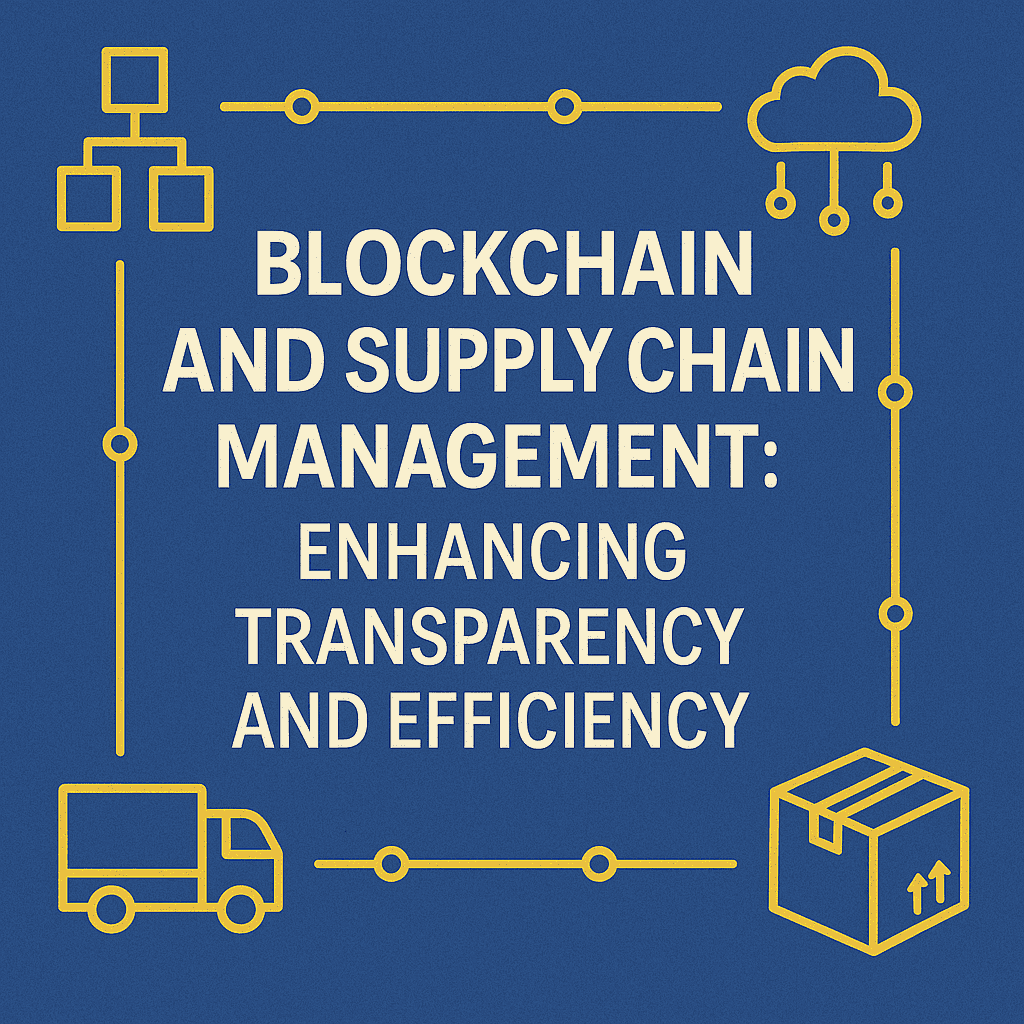Blockchain and Supply Chain Management: Enhancing Transparency and Efficiency
In today’s globalized economy, supply chains have evolved into incredibly complex networks spanning multiple stakeholders, geographies, and systems. Traditional processes often struggle with issues such as lack of transparency, fraud, and inefficiencies. Enter blockchain technology—a decentralized, immutable ledger that’s poised to transform supply chain management by making operations more transparent, secure, and efficient.
Revolutionizing Transparency
Blockchain’s decentralized nature ensures that every transaction recorded is permanent and visible to all authorized parties. This means that from raw materials to finished goods, every step is documented in a tamper-resistant digital ledger. Imagine being able to verify the origin and journey of a product in real time—this is the promise of blockchain. By eliminating hidden data and opaque processes, companies can build trust with stakeholders, reduce fraud, and ensure regulatory compliance.
Boosting Efficiency
Efficiency in supply chains is crucial for reducing costs and meeting consumer demands. Blockchain minimizes the need for intermediaries by automating processes with smart contracts. These self-executing contracts trigger actions—such as payments or shipment verifications—once predefined conditions are met. As a result, administrative overhead is reduced, delays are minimized, and overall process integrity is enhanced. Companies can expect faster throughput, lower transaction costs, and a more agile response to market fluctuations.
Real-World Applications
Several industries are already reaping the benefits of blockchain in supply chain management:
- Food and Beverage: Retail giants use blockchain to track food items from farm to store, ensuring safety and quality.
- Pharmaceuticals: Immutable records help verify the authenticity of drugs, reducing the risks associated with counterfeit medicines.
- Manufacturing and Retail: Enhanced traceability ensures that every component in a product is authentic and sourced responsibly.
These examples demonstrate how blockchain not only mitigates traditional risks but also opens the door to innovative collaboration between suppliers, manufacturers, and consumers.
The Future of Supply Chains
As blockchain technology matures, its integration within supply chain management is set to deepen. Future advancements may include improved scalability, broader industry standards, and even greater interconnectivity among disparate systems. With continued innovation, supply chains will likely become fully automated and self-regulated, changing the face of global commerce.
Visual Concept: Image Description
Concept Title: Blockchain Empowering Supply Chains
Design Elements:
- Background: A dynamic, digital landscape featuring a subtle grid pattern symbolizing interconnected global networks.
- Central Imagery: A stylized blockchain network overlay, with interconnected nodes representing different stages of the supply chain—from raw material sourcing to end consumer delivery. Each node is linked by glowing lines to convey the flow of information.
- Text Overlay: Bold, modern typography displaying the headline “Blockchain and Supply Chain Management: Enhancing Transparency and Efficiency” positioned centrally or at a creative angle to capture attention.
- Accents: Icons or visual cues (like check marks or secure padlocks) to emphasize trust, security, and automation.
- Color Palette: A blend of cool tones—blues and purples—with neon accents to evoke a sense of futuristic technology and reliability.
Previous NFTS


